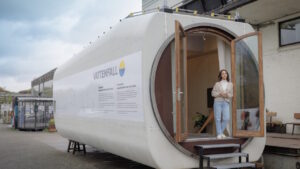US solar giant SunEdison has been named as the co-developer with Australia’s Solar Choice of the proposed 2GW Bulli Creek mega solar project in south-west Queensland, which would be the largest in the world once fully developed.
Solar Choice obtained planning approval in February 2015 from Toowoomba Regional Council for a staged deployment of up to 2GW over eight years.
The first stage of the massive project could start construction in mid 2016, although this will depend on negotiations for a power purchase agreement with retailers or industrial consumers.
The involvement of a major player like SunEdison is another key milestone for the project, given the scale of the proposal and the capital costs involved.
“SunEdison has partnered with Solar Choice with the intention to co-develop the Bulli Creek Solar Farm in Australia,” the two companies said.
“SunEdison has signed a shareholder agreement for the Bulli Creek Solar Farm, expected to become the world’s largest solar farm, powering up to 700,000 homes.”
No other details about SunEdison’s involvement were available, although it should be noted that SunEdison has become one of the biggest developers of large-scale solar plants in the world.
A recent report by Deutsche Bank predicted that such vehicles for solar projects would quickly outstrip the $1 trillion market for their equivalent in the oil and gas industry.
Angus Gemmell, the head of Solar Choice, says the Bulli Creek project is “progressing well”.
It already has planning approval from the local council, and this week Gemmell and his team met with Queensland energy minister Mark Bailey and minister for state development and natural resources and mines Anthony Lynham to discuss the project.
“We are not seeking their assistance, but they have a positive attitude towards the proposal and are looking forward to stage one proceeding,” Gemmell said.
Queensland is the prospective state for large-scale solar, because of its excellent solar resources, and because it is one of the few growth areas for demand in Australia.
Even the first stage of Bulli Creek is likely to be the biggest solar farm in Australia, a title currently held by the 103MW Nyngan project in NSW, which was heavily subsidised by the old Solar Flagships program.
Gemmell said the prospects of the Bulli Creek project, and other solar projects were boosted by numerous “uplift factors” that solar PV enjoys.
These included its ability to target peak events on the NEM, which were enhanced by horizontal single axis trackers in the afternoon, and the “bankability of the sun” rising every morning, as opposed to when the wind is blowing.
He also said the Bulli Creek solar project enjoys huge social licence in regional and rural Australia, particularly in Queensland.
Indeed, the federal government has also expressed its preference for large-scale solar, particularly over large-scale wind, and has called for the Clean Energy Finance Corporation to direct funding towards that area, as well as other emerging technologies.
Some analysts suggest that large-scale solar could provide nearly half of the new build required to meet the renewable energy target, even though it has been cut to 33,000GWh from 41,000GWh. Much of this would be in Queensland, whose Labor government is showing interest in renewable energy.
Bloomberg New Energy Finance’s Kobad Bhavnagri said in May that the strong solar resources, increasing grid demand, and the shape of that demand, meant that solar may only need a renewable energy certificate price of little more than half that of wind projects in southern states.
The Australian Renewable Energy Agency has said that utility-scale solar in Australia costs around $140/MWh. That compares to around $80MWh for the best wind projects.
But ARENA says these costs can be reduced quickly if the cost of finance falls, alongside costs associated with a mature supply chain and maintenance.
Canadian Solar recently estimated that the costs of large-scale solar PV in Australia could fall by half by 2020 – to around $75/MWh – if financing, supply, maintenance and planning costs were reduced, and technology improvements also continued.











